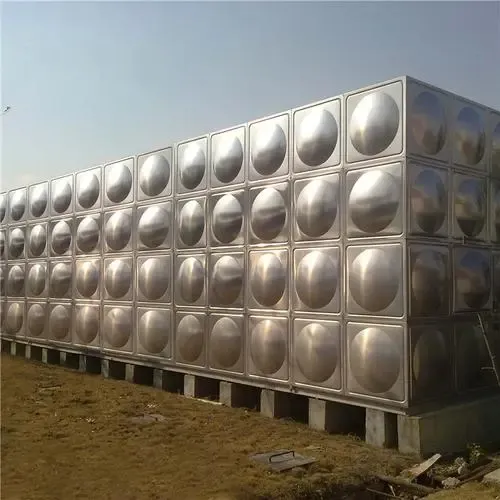loading...
- No. 9, Xingyuan South Street, Dongwaihuan Road, Zaoqiang County, Hengshui, Hebei, China
- admin@zjcomposites.com
- +86 15097380338
- Welcome to visit our website!
ro membrane housing
Understanding RO Membrane Housing Key to Efficient Water Purification
Reverse osmosis (RO) technology has become a cornerstone in the quest for clean and safe water, especially in households and industries where water quality is paramount. Central to the effectiveness of an RO system is the RO membrane housing, a critical component that houses the RO membrane itself and ensures optimal performance in water purification processes.
What is RO Membrane Housing?
RO membrane housing is essentially a cylindrical container designed to hold one or multiple RO membranes. It is built to withstand high pressure, which is crucial for the reverse osmosis process. Water enters the housing, passes through the semi-permeable membrane, and impurities are effectively removed, resulting in purified water. The housing must be durable and resistant to corrosion, given the nature of the substances it often comes into contact with.
Importance of RO Membrane Housing
The efficiency of an RO system hinges on the quality of its housing. A well-designed RO membrane housing will
1. Ensure Durability Made from materials like fiberglass or high-grade plastic, the housing must endure high pressure and chemical exposure without degrading over time.
2. Facilitate Easy Maintenance Regular maintenance is crucial for the longevity of RO systems. Housing designs that allow easy access to membranes enable users to replace or clean them without significant disruption or hassle.
3. Maximize Filtration Efficiency The design of the housing can influence water flow and pressure, both of which are critical to the membrane's ability to filter out contaminants effectively. A well-engineered housing ensures that water flows uniformly across the membrane, enhancing its efficiency.
4. Prevent Contamination Proper sealing and robust construction help prevent leaks and contamination, ensuring that the purified water remains free of impurities.
Types of RO Membrane Housing
RO membrane housings come in various configurations, tailored to different applications
ro membrane housing

1. Single Membrane Housing Used in residential systems, this is typically smaller and designed for household water purification needs.
2. Multi-Membrane Housing Common in industrial applications, these housings can accommodate several membranes, allowing for higher water output and more efficient filtration processes.
3. Compact and Modular Designs Some modern systems feature compact housings that save space while maintaining performance, catering to urban households where space may be limited.
Selecting the Right RO Membrane Housing
When choosing RO membrane housing, it is essential to consider factors such as
- Material Quality Look for housing made from high-quality, food-grade materials that can withstand your specific water conditions.
- Compatibility Ensure that the housing is compatible with the type and size of RO membrane you are using.
- Pressure Ratings Verify that the housing can handle the pressure levels required for your system to function effectively without risks of leaks or failures.
- Ease of Installation and Maintenance Opt for designs that are user-friendly for installation and maintenance, simplifying the upkeep of your RO system.
Conclusion
RO membrane housing plays a pivotal role in the efficiency and effectiveness of water purification systems. By understanding its importance and selecting the right housing, users can ensure that their reverse osmosis systems function optimally, providing clean, safe drinking water. As water quality continues to be a pressing global concern, investing in quality RO systems with reliable membrane housing becomes an essential step toward achieving a sustainable and healthy water supply.
-
The Rise of FRP Profiles: Strong, Lightweight, and Built to LastNewsJul.14,2025
-
SMC Panel Tanks: A Modern Water Storage Solution for All EnvironmentsNewsJul.14,2025
-
GRP Grating: A Modern Solution for Safe and Durable Access SystemsNewsJul.14,2025
-
Galvanized Steel Water Tanks: Durable, Reliable, and Ready for UseNewsJul.14,2025
-
FRP Mini Mesh Grating: The Safer, Smarter Flooring SolutionNewsJul.14,2025
-
Exploring FRP Vessels: Durable Solutions for Modern Fluid HandlingNewsJul.14,2025
-
GRP Structures: The Future of Lightweight, High-Performance EngineeringNewsJun.20,2025
